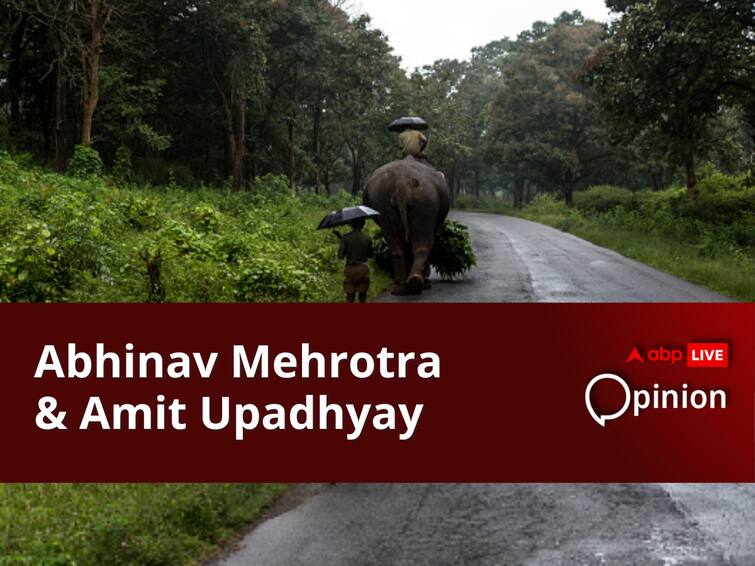When Rights Collide: Thengumarahada Case Shows The Need For Balancing Animal And Human Interests

A recent decision by the Madras High Court establishing the right of animals to live without fear and distress has resulted in the relocation of 495 families in Tamil Nadu’s Thengumarahada. The court reiterated the importance of respecting cultural practices while upholding the principles of compassion and responsible conduct towards animals. The judgment states that human settlement in the forest led to man-animal conflict.
The village was located amidst the rich biodiversity regions of the Eastern and Western Ghats and served as a corridor for wild animals. The court justified its decision under Article 48A of the Constitution, which states that the Centre should endeavour to safeguard the forests and wildlife of the country. However, the court ordered a compensation of ₹15 lakh each to the 495 families from the Compensatory Afforestation Fund Management and Planning Authority (CAMPA) funds.
The case highlights the growing potential of a human rights framework to provide for animal protection and the need to balance the two while addressing the concerns that directly or indirectly affect the rights or welfare of animals. The main issue is about the funding needed for such initiatives as the state of Tamil Nadu contributes only a negligible share to the CAMPA funds, and hence the minimum contributions needed for the CAMPA funds from states assumes significance. Several other questions also arise regarding the issue of animal rights, the statutory standing of the CAMPA funds, and the possible way forward to balance animal and human rights.
Understanding Animal Rights
Historically, the concept of animal rights has been based on the principle of egalitarianism, which means everyone’s interest counts and the rights of animals also provide grounds that satisfy the rights of humans. As a result, animals cannot be treated as resources for science or commercial animal agriculture, or sports and hunting. The court, while not being indifferent to the welfare of animals, instrumentalised animal welfare not as a good in itself but instead valued it for its implications for human welfare and rights. It highlighted that although the goals of human rights law are different from that of animal law, there are many overlapping concerns where mutually beneficial approaches are required.
Activists argue that all humans have a sense of duty towards animals. Several animals are found together in the given case — tiger, elephant, leopard, sloth bear, wild dog, hyena, black buck, four-horned antelope, barking deer, mouse deer, and sambar to name a few. The court found it proper to relocate the humans and adequately compensate them for resettling and earning their livelihoods again. In this respect, the understanding of the CAMPA must be clear.
What Is CAMPA?
The Compensatory Afforestation Fund Management and Planning Authority (CAMPA) traces its origin to the Forest Conservation (Amendment) Act of 1980, which a new Act is replacing. According to the 1980 Act, no forestland shall cease to be reserved without the clearance of the government, and no forestland may be used for non-forest purposes. Such provision gave rise to the need for having monetary compensation in place for those who are deprived of their lands put to non-forest use, as held by the Supreme Court in 2002, leading to the CAMPA coming into existence. In 2014, the Supreme Court even allowed the states to form their own CAMPAs.
In 2016, the government established the Compensatory Afforestation Fund Act 2016 to utilise money deposited with the forest department for compensatory afforestation instead of the forest derived. Under these Acts, there exist conditions for providing resettlement packages to communities that are being relocated, as their activities may cause irreparable damage to wild animals and their existence. A significant question looms regarding the enforcement of such measures.
How To Balance Animal And Human Rights?
The potential of human rights institutions and the need for animal welfare and protection may appear distant. Still, animal space availability in this mainly human-centered area of law and policy only reflects our skepticism in this growing need to bridge the human/animal divide. Nevertheless, cases like Thengumarahada indicate modest advances in creating opportunities for animal welfare and rights concerns to be considered within the human rights framework.
Given the significance of balancing animal rights and human rights, there needs to be active participation of the forest dwellers and tribal communities displaced in the working of the national CAMPA and the state authorities for Afforestation Fund Management and Planning. At a more significant level, efforts need to be made for community or sector-specific adaptation and mitigation strategies that help identify the vulnerable communities and sectors and help ensure accountability of those responsible.
Abhinav Mehrotra is an Assistant Professor and Amit Upadhyay an Associate Professor at Jindal Global Law School, O.P. Jindal Global University, Sonipat, India.
[Disclaimer: The opinions, beliefs, and views expressed by the various authors and forum participants on this website are personal and do not reflect the opinions, beliefs, and views of ABP News Network Pvt Ltd.]


























